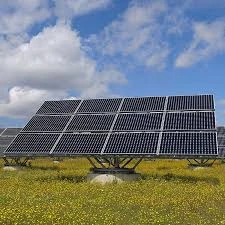Exploring Different Types of Solar Panels and Their Efficiency Ratings for Sustainable Energy Solutions
Understanding Solar Panel Types and Their Efficiency
As the world increasingly shifts towards renewable energy sources, solar power has emerged as a leading alternative due to its sustainability and abundance. Solar panels, also known as photovoltaic (PV) panels, are pivotal in converting sunlight into electricity. However, not all solar panels are created equal; they come in various types, each with distinct characteristics and efficiency levels.
Types of Solar Panels
The three most common types of solar panels are monocrystalline, polycrystalline, and thin-film, each with unique advantages and applications.
1. Monocrystalline Solar Panels Monocrystalline panels are made from a single crystal structure, typically silicon. This type of panel is known for its high efficiency, often exceeding 20%, making it one of the most effective options on the market. Monocrystalline panels are also space-efficient, meaning they require less area to produce the same amount of energy as other types. The sleek black appearance is aesthetically pleasing, which adds to their appeal for residential installations. However, they tend to be the most expensive option, which can be a consideration for budget-conscious consumers.
2. Polycrystalline Solar Panels Polycrystalline panels are created from multiple silicon crystals melted together. While they are generally less efficient than their monocrystalline counterparts, with efficiencies around 15-20%, they are more affordable. The blue hue of polycrystalline panels comes from the manufacturing process, which can be less visually appealing to some homeowners. These panels tend to have slightly lower performance in high-temperature environments and may take up more space, but their cost-effectiveness makes them a popular choice for many residential and commercial applications.
3. Thin-Film Solar Panels Thin-film solar panels are composed of layers of photovoltaic material laid onto a substrate. They are lightweight and flexible, making them suitable for unconventional installations and large-scale projects. While their efficiency is typically lower, ranging from 10 to 12%, they can perform better in low-light conditions and high temperatures. Thin-film panels are also more affordable to produce, making them an attractive option for large installations where space is not as much of a constraint, such as solar farms.
Efficiency Factors
solar panel types and efficiency

The efficiency of solar panels refers to the percentage of sunlight that is converted into usable electricity
. Several factors influence this efficiency, including- Material Quality The purity of the silicon and the manufacturing process impact how well the panel can convert sunlight into energy. Higher-quality materials generally lead to higher efficiency.
- Temperature Solar panels tend to be less efficient at higher temperatures. While some technologies, like certain thin-film panels, may handle heat better, most silicon-based panels will see a reduction in efficiency as temperatures rise.
- Maintenance Regular cleaning of solar panels can help maintain their efficiency. Dust, dirt, and debris can block sunlight from reaching the solar cells, reducing overall performance.
- Orientation and Angle The way solar panels are installed plays a critical role in their efficiency. Panels should face the sun to maximize exposure throughout the day, and the angle may need to be adjusted based on geographic location to optimize energy production.
Conclusion
In conclusion, understanding the various types of solar panels and their efficiency is crucial for making informed decisions about solar energy investments. Monocrystalline panels offer the highest efficiency but at a premium cost, while polycrystalline panels provide a more budget-friendly option with relatively good performance. Thin-film panels, although less efficient, are versatile and suitable for specialized applications. As technology advances and production methods improve, the efficiency of solar panels continues to increase, making solar energy an ever more viable and sustainable choice for the future.
-
Unlocking Energy Freedom with the Off Grid Solar InverterNewsJun.06,2025
-
Unlock More Solar Power with a High-Efficiency Bifacial Solar PanelNewsJun.06,2025
-
Power Your Future with High-Efficiency Monocrystalline Solar PanelsNewsJun.06,2025
-
Next-Gen Solar Power Starts with Micro Solar InvertersNewsJun.06,2025
-
Harnessing Peak Efficiency with the On Grid Solar InverterNewsJun.06,2025
-
Discover Unmatched Efficiency with the Latest String Solar InverterNewsJun.06,2025







